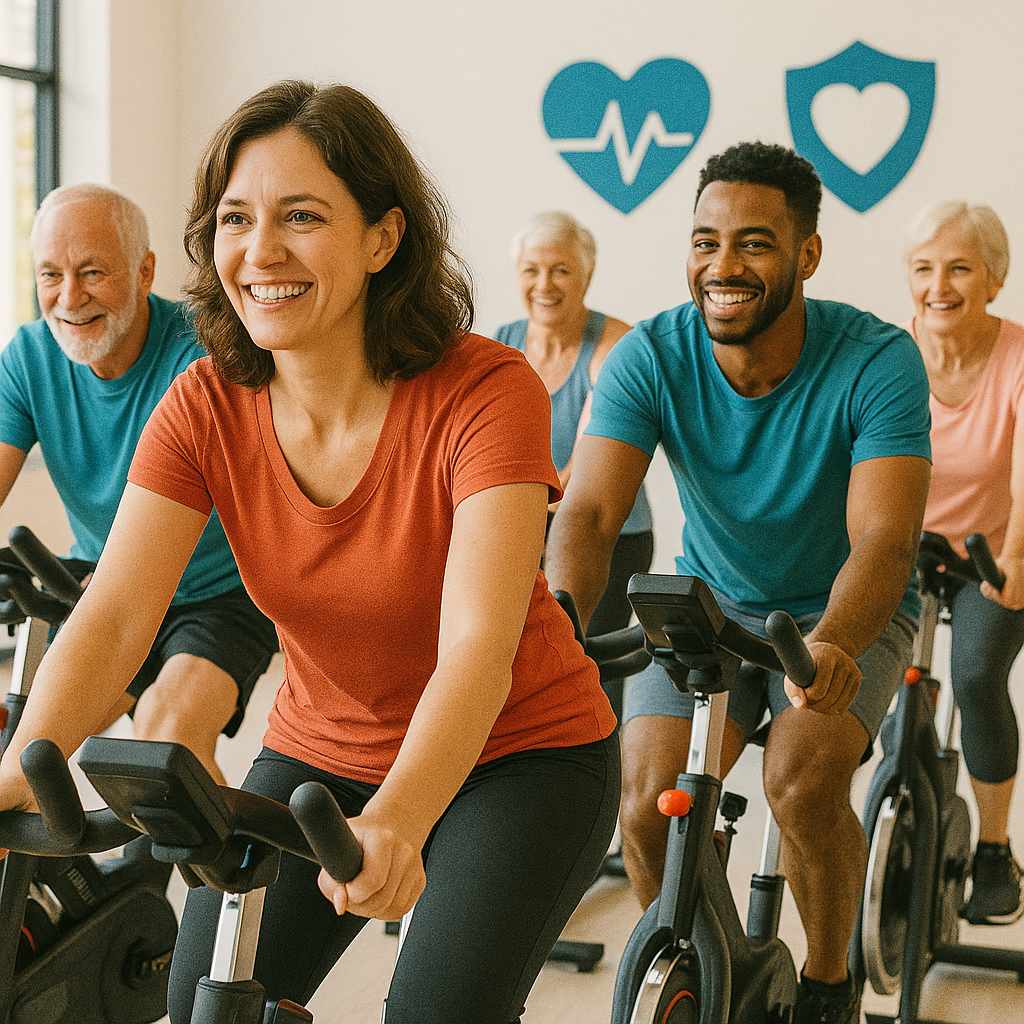Exercise bikes offer one of the best and safest ways to boost your health—burning calories, improving heart health, supporting joints, and enhancing mental well-being—all from the comfort of your home or gym. Whether you want to lose weight, increase endurance, or manage stress, exercise bikes provide a low-impact, highly effective workout for people of all fitness levels.
Understanding the full range of benefits is crucial for choosing the best fitness routine. Exercise bikes deliver significant improvements for cardiovascular health, weight management, joint health, and even brain function. In this guide, you’ll discover key advantages, the latest research, expert tips, and answers to common questions about using exercise bikes for better health.

Key Health Benefits of Exercise Bikes
Cardiovascular Health: Strengthen Your Heart
Using an exercise bike consistently helps strengthen your heart muscle, lowers resting heart rate, and improves overall cardiovascular conditioning. Indoor cycling has been shown to lower blood pressure, improve cholesterol profiles, and boost aerobic capacity (VO₂max).
A recent clinical study found that a 12-week cycling routine significantly reduced blood pressure and improved HDL (“good”) cholesterol levels, while lowering LDL and triglycerides. Study Source (2023)
- Improves blood circulation and heart function
- Reduces risk of heart disease and stroke
- Boosts endurance for daily activities
For more on heart health and cycling, visit the American Heart Association.
Burn Calories and Lose Weight
Exercise bikes are excellent for weight loss and burning calories efficiently. A 45-minute vigorous cycling session can burn over 500 calories for an average adult.
Even short sessions can speed up metabolism—one study reported a 37% post-exercise metabolic boost after moderate indoor cycling. NordicTrack (2024)
- Reduces body fat and BMI
- Helps manage weight safely, with less risk of injury compared to running
- Effective for all ages and fitness levels
Joint-Friendly and Low Impact
If you have joint pain or are recovering from injury, exercise bikes offer a low-impact workout that’s gentle on the knees, hips, and lower back.
Unlike running or high-impact sports, cycling minimizes stress on the joints while still delivering excellent fitness results. This makes it ideal for seniors, people with arthritis, or those new to exercise. Physical therapists frequently recommend recumbent bikes for rehabilitation.
Learn more about low-impact exercise from the Cleveland Clinic.
Build Muscle and Strength
Cycling targets major muscle groups—especially the legs, glutes, and core. Regular use can lead to:
- Stronger quads, hamstrings, calves, and glutes
- Improved balance and stability
- Enhanced lower-body muscle tone and endurance
Adding interval workouts or resistance increases the strength-building benefits even more.
Mental Health & Brain Function
Exercise bikes don’t just improve your body—they help your mind, too.
Aerobic activity like cycling increases blood flow to the brain, boosting memory, focus, and mood. Studies show regular cycling helps:
- Reduce symptoms of depression and anxiety
- Improve sleep quality
- Lower risk of cognitive decline and dementia (up to 1.5 years delay in onset) The Times (2024)
- Boost levels of BDNF, a brain-protective growth factor
Lower Your Risk of Chronic Diseases
Consistent exercise bike use is linked to lower rates of:
- Type 2 diabetes
- High blood pressure
- Obesity
- Certain cancers
A 2024 research review concluded that adults who cycled regularly (at least 150 minutes per week) had up to 30% lower risk of developing chronic illnesses. NIH
How to Maximize the Benefits of Exercise Bikes
Workout Recommendations
- Frequency: Aim for at least 150 minutes of moderate cycling or 75 minutes of vigorous cycling per week (CDC guidelines).
- Intensity: Use interval training (alternating high and low effort) for faster fitness gains.
- Variety: Mix upright and recumbent bike sessions for different muscle engagement and comfort.
- Posture: Keep your back straight, core engaged, and avoid locking your knees.
Tips for Beginners
- Start with 10–20 minute sessions and gradually increase time.
- Adjust seat and handlebars for comfort and safety.
- Stay hydrated and wear proper footwear.
For more detailed workout tips, visit the Mayo Clinic Fitness Guide.
Frequently Asked Questions
Are exercise bikes safe for people with bad knees?
Yes, they’re considered one of the safest cardio options for those with knee pain or arthritis. Choose a recumbent bike for extra support.
Can exercise bikes build muscle?
While they primarily offer cardio benefits, increasing resistance can also help build and tone leg muscles.
What’s the best time of day to use an exercise bike?
Any time! Consistency matters more than timing—choose what fits your schedule and stick with it.
Conclusion
Exercise bikes are a powerful tool for boosting heart health, managing weight, protecting joints, and supporting your mental well-being—all in a safe, convenient way. If you’re looking for an effective, joint-friendly, and accessible workout, now’s the perfect time to make exercise biking part of your routine.
